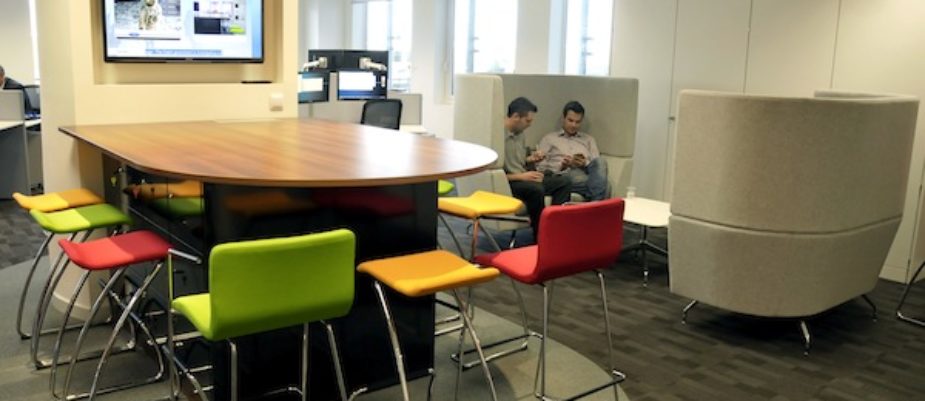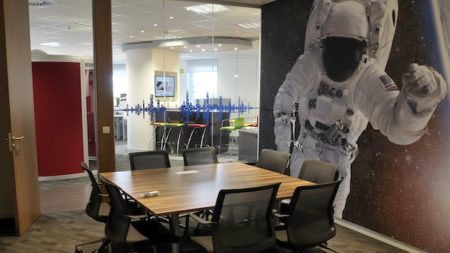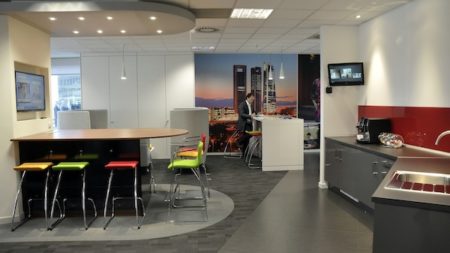
Flexible working once seemed like a futuristic idea but thanks to enabling technology, real estate rationalisation and staff wishes, it is now becoming mainstream. Philip Vanhoutte, Senior Vice President and Managing Director of Europe and Africa for Plantronics suggests us ten tangible tips to make the change within your own organisation.
After looking at the results of 10 studies evaluating more than 16,000 people, a 2010 Cochrane research review found that self-scheduling work time improved a variety of items, including improved sleep, reduced exhaustion, lowered blood pressure, improved mental health and much more. With such positive results reported and a personal genuine passion for smarter working, I embarked on a journey to develop a flexible working management policy and new working spaces across Europe for Plantronics.
Below are ten tips on how to make the change within your own organisation.
1) Evaluate your current office situation.
It is essential to keep pace with the modern workforce and help employees stay connected and content no matter where they are. Evaluate the varying needs of the employees first, where they are located and their personality types, before embarking on this journey. To facilitate the changes we used the Leesman ‘Employee Work Space Satisfaction Survey’ (www.leesman.co.uk) , which, gave our employees a voice in the design and layout of their office space covering three main areas: Bricks (office environment), Bytes (technology) and Behaviours (work practices).
2) Plan thoroughly.
While not always going the way you intended, having a plan in mind before you start is imperative. There are many moving parts to a smarter working space and it’s easy to stray off the course. Talk with experts in interior design, facilities management, IT and human resources to learn what can work best for your situation. Remember, advice is free.
3) Make your employees happiness your main goal.
Throughout the entire process our main goal was to help our employees get the most out of work. The more your employees are on-board and engaged, the better the outcome. If the changes you make do not impact them directly, it is probably not the best decision.
4) Create spaces in the office that are optimised for specific types of work.
In our redesign we employed an acoustic zoning design to meet four critical new office workspaces that focus on the ability to Concentrate (quiet space for focused work); Collaborate (zones to work together); Communicate (vibrant, busy areas for constant good noise,) and Contemplate (time out space for creative inspiration, refuelling, relaxation). These four spaces satisfy the needs of our busy employees and make for a healthier and happier office environment.
5) Make stellar space acoustics a top priority.
Offices, no matter their location, are often riddled with constant distractions and loud noises. In our journey towards new smarter working offices, we incorporated the ABCs of space acoustics – Absorption, Blocking and Covering. Using panels and textiles to absorb the sound, sound barriers for blocking, and the generation of anti-noise help to keep distractions at bay in the new area.
6) Get the right technology.
Address communication requirements for a dispersed workforce that centres on identity and presence for all employees at all times. This ensures everyone feels “checked in”. Desk phones were replaced by softphones making laptops and smartphones the de facto means of voice communications. Presence was aided by applications such as Microsoft Lync and CISCO Jabber. And we made sure we had fully optimised PCs, network bandwidth and voice quality of service, especially over Wi-Fi.
7) Don’t forget training.
All the best technology in the world won’t be of any help without all employees knowing how to use it to its fullest potential. Take the time for questions and a period of transition until the technology starts to work for your business.
8) Establish trust.
Do not let managers feel they are losing ‘sight’ of employees and employees feel they are losing ‘sight’ of their goals. Having the right technology so that everyone feels connected is one step. The other is to ensure all team members expectations, practices and procedures within the business are aligned so there are no surprises. This isn’t always easy but if you identify the correct training agent to support this required change, managers will embrace a distributed workforce, you will build a high performing distributed team and enable effective communication with team members.
9) Take time to evaluate the progress.
It is easy to forget to take a step back and evaluate how the change is being received. Be sure to check in with your employees and allow for training and time to transition. To do this, we had Leesman come back after the redesign and found that there was a 40% increase in workspace satisfaction. On top of that we realized 30% reduction of costs of real estate, 60% decrease of absent employees, and an increase of 20% of the overall happiness of staff and clients. That’s moving the needle.
10) Enjoy the journey.
Simple enough to say, but its important to enjoy the positive changes being implemented in your workplace. From the lighting placement to employee happiness. People are the key to smarter working, always keep that in mind.
If it isn’t clear already, I am a true smarter working convert. Despite other companies going the opposite direction, I am believer that if you give your employees the right tools, correct space and trust them with the freedom to choose how they work, they will do truly amazing things. I have seen it happen.
Text by Philip Vanhoutte, Senior Vice President and Managing Director of Europe and Africa for Plantronics. Plantronics has new smarter working offices in the UK, Germany, Spain and the Netherlands. With more to follow.
The photos show the Plantronics offices in Madrid.


















